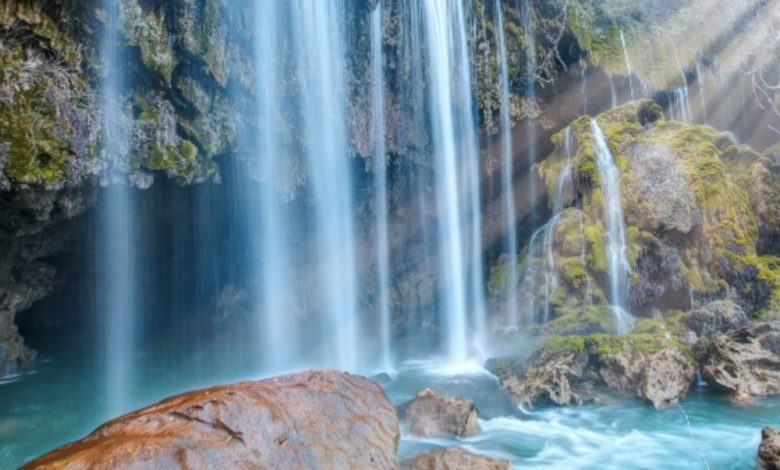List of waterfalls

Types
See also: List of waterfalls by type
An example of an ephemeral waterfall. This one, when flowing, feeds into the Chagrin River.
Ledge waterfall: Water descends vertically over a vertical cliff, maintaining partial contact with the bedrock.[14] (e.g. Niagara Falls)
Block/Sheet: Water descends from a relatively wide stream or river.[3][14]
Classical: Ledge waterfalls where fall height is nearly equal to stream width, forming a vertical square shape.[3]
Curtain: Ledge waterfalls which descend over a height larger than the width of falling water stream.[3]
Plunge: Fast-moving water
descends vertically, losing complete contact with the bedrock surface.[14] The contact is typically lost due to horizontal velocity of the water before it falls. It always starts from a narrow stream. (e.g. Angel Falls)
Punchbowl: Water descends in a constricted form and then spreads out in a wider pool.[14] (e.g. Punch Bowl Falls)
Horsetail: Descending water maintains contact with bedrock most of the time.[14] (e.g. Jog Falls)
Slide: Water glides down
maintaining continuous contact.[14]
Ribbon: Water descends over a long narrow strip.[14]
Chute: A large quantity of water forced through a narrow, vertical passage.[14]
Fan: Water spreads horizontally as it descends while remaining in contact with bedrock (e.g. Powerscourt Waterfall).[14]
Cascade: Water descends a series of rock steps.[3][14] (e.g. Numa Falls)
Tiered/Multi-step/Staircase: A series of waterfalls one after another of roughly the same size each with its own sunken plunge pool.[14] (e
.g. Ebor Falls)
Cataract: A large, powerful waterfall.[14] (e.g. Victoria Falls)
Segmented: Distinctly separate flows of water form as it descends.[14]
Frozen: Any waterfall which has some element of ice or snow.[14]
Moulin: A moulin is a waterfall in a glacier.
Some waterfalls are also distinct in that they do not flow continuously. Ep
